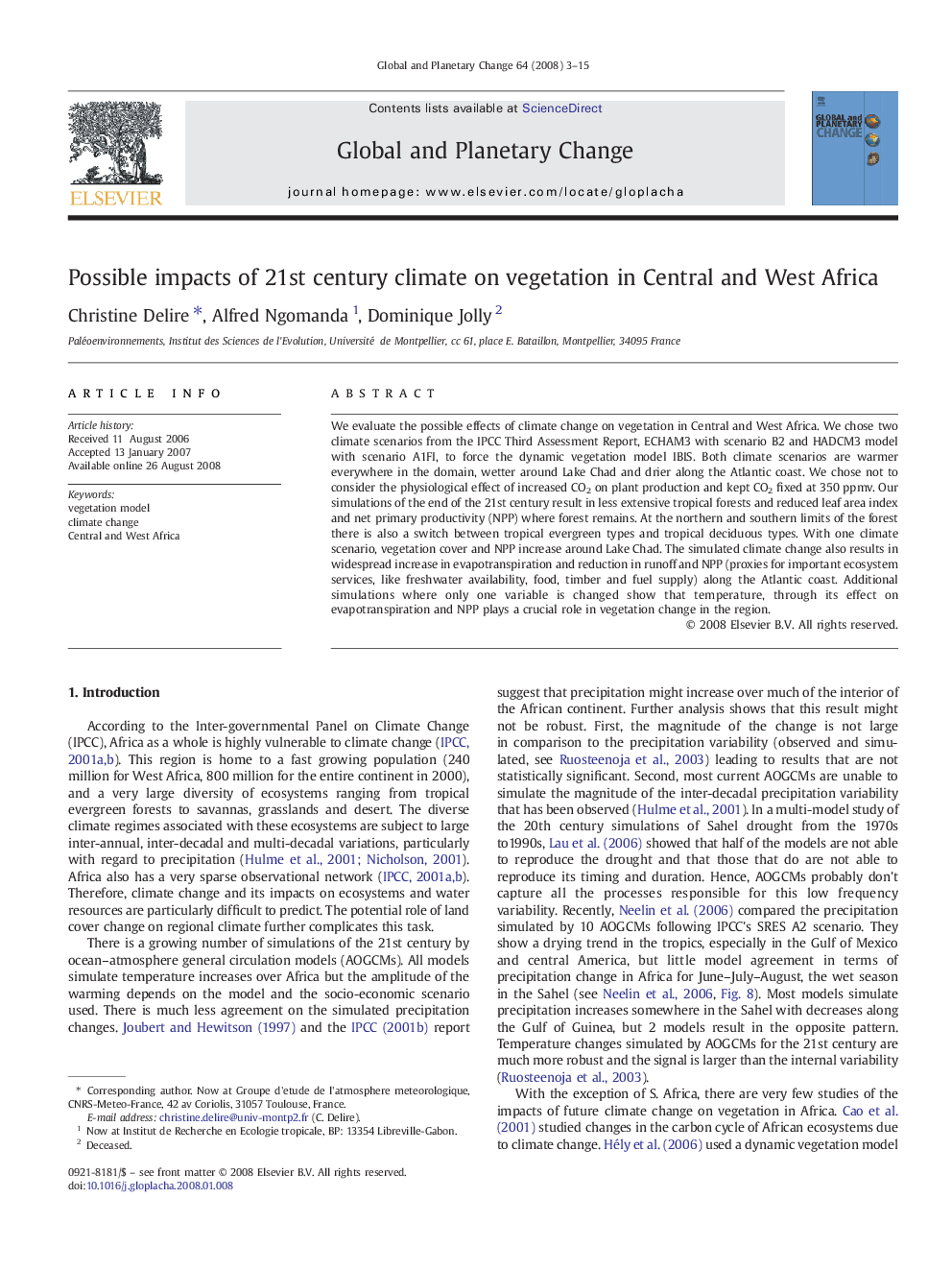| Article ID | Journal | Published Year | Pages | File Type |
|---|---|---|---|---|
| 4464221 | Global and Planetary Change | 2008 | 13 Pages |
We evaluate the possible effects of climate change on vegetation in Central and West Africa. We chose two climate scenarios from the IPCC Third Assessment Report, ECHAM3 with scenario B2 and HADCM3 model with scenario A1FI, to force the dynamic vegetation model IBIS. Both climate scenarios are warmer everywhere in the domain, wetter around Lake Chad and drier along the Atlantic coast. We chose not to consider the physiological effect of increased CO2 on plant production and kept CO2 fixed at 350 ppmv. Our simulations of the end of the 21st century result in less extensive tropical forests and reduced leaf area index and net primary productivity (NPP) where forest remains. At the northern and southern limits of the forest there is also a switch between tropical evergreen types and tropical deciduous types. With one climate scenario, vegetation cover and NPP increase around Lake Chad. The simulated climate change also results in widespread increase in evapotranspiration and reduction in runoff and NPP (proxies for important ecosystem services, like freshwater availability, food, timber and fuel supply) along the Atlantic coast. Additional simulations where only one variable is changed show that temperature, through its effect on evapotranspiration and NPP plays a crucial role in vegetation change in the region.
